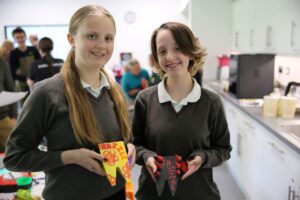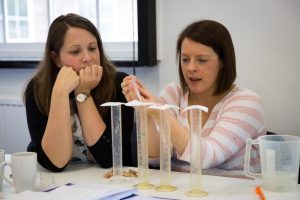A world of Adventure with Wildlife Cameraman Doug Allan
Thursday 10th May 2018
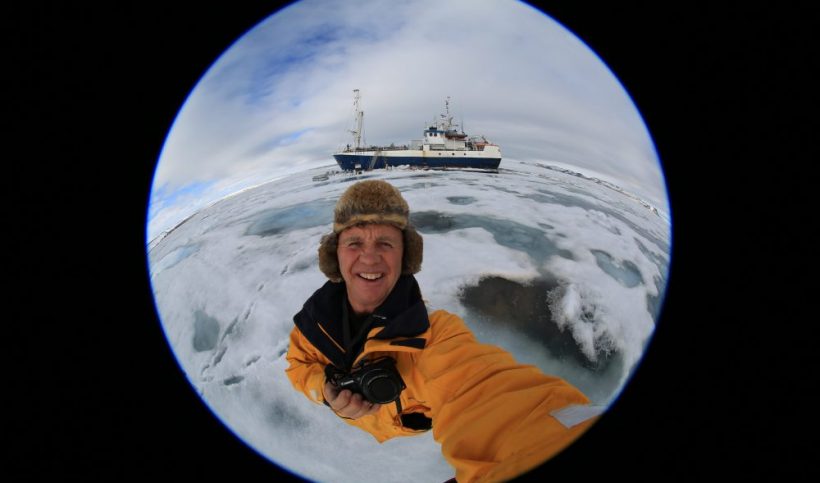
It can only can say good things about your character if one of your friends and work colleagues is Sir David Attenborough. Or that you’re willing to wait out a month in temperatures as low as -32c to capture on film the emergence of a polar bear and her new cubs from their den for the first time.
Doug Allan is a legend in the world of wildlife filmmaking. A serendipitous meeting with Sir David in the Antarctic in 1981 led to a shift in career from research diver with the British Antarctic Survey to full-time cameraman – and Doug has never looked back. His expert camera work can be seen in numerous BBC wildlife documentaries – from ravenous leopard seals in Life in the Freezer (1993) and that polar bear footage in Planet Earth (2006) to the iconic seascapes of Blue Planet (2001) and in Forces of Nature (2016).
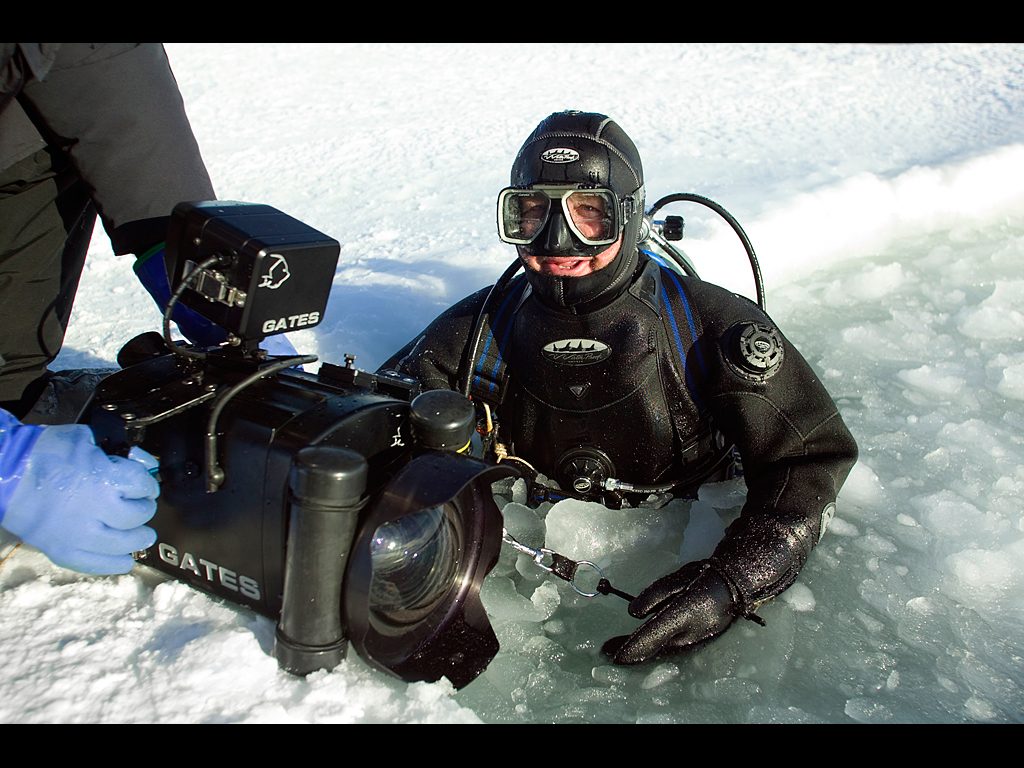
Doug Allan on location during filming for Planet Earth – Iceworlds, March 2006. Belcher Islands, near Sanikiluaq, Hudson Bay, Canada. Temperature was around -20C!
Considered peerless in his field, Doug continues to work in some of Earth’s most extreme environments, and it was this theme that linked his fascinating talk at Abingdon School last week. Titled An Eye Below Zero, he took an audience of nearly four hundred people on a ninety-minute journey to the poles, highlighting the beauty and the challenges of the places he films in and the wildlife that is able to live and thrive in such inhospitable conditions.
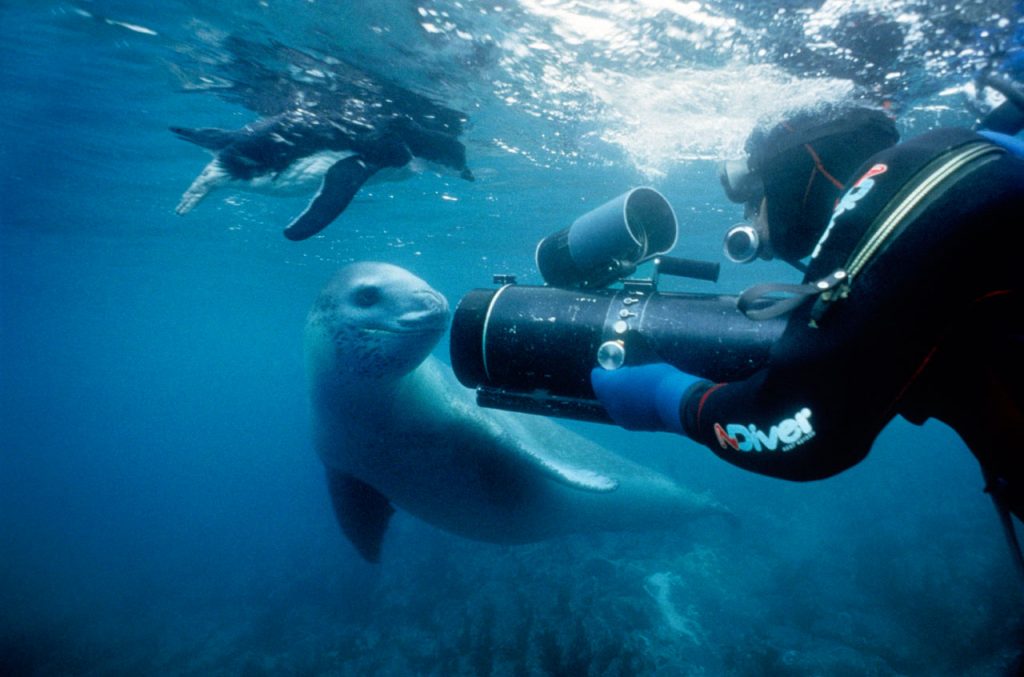
Doug and Leopard Seal
We saw arctic foxes, ice fish, Weddell seals and the most stunning icebergs that looked as if they had been crafted from clouds. Doug’s passion (and patience) for underwater filming enabled us to watch guillemots dive a hundred metres into ice-cold water for their lunch (he waited an hour and nearly got eaten by a walrus.) Beluga whales communicate by chirping, whistling and squeaking and we got to listen in on their conversation. The species is not just chatty but also inquisitive – one stunning photograph showed a beluga pod in the Canadian Arctic, swimming on their backs and staring right down Doug’s camera lens. Breath-taking stuff.
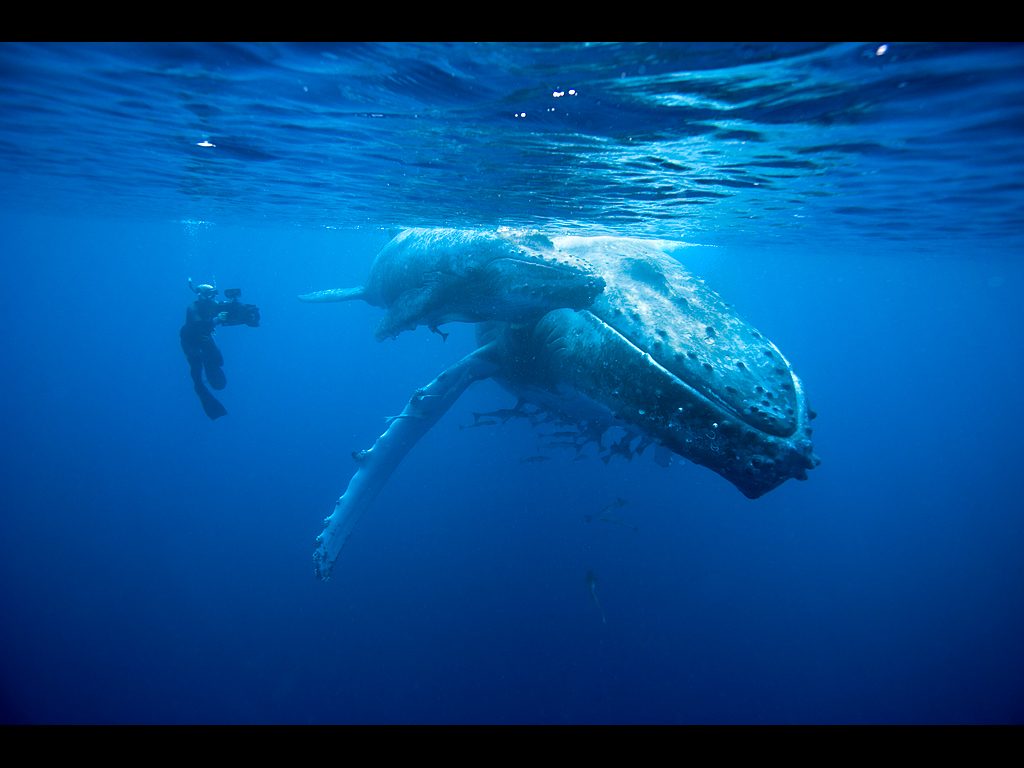
Doug Allan filming Humpback whale mother and calf (Megaptera novaeangliae), Kingdom of Tonga, South Pacific, during filming for Planet Earth, Sept 2005.
However, the talk wasn’t just about providing ‘wow’ moments. Doug’s connection with the outdoors runs deep – he is passionate about what he does, the locations he stays in and the wildlife he spends time with. That passion was tangible as he recalled polar bear visits to his Antarctic cabin and diving with whales but also when he spoke of the toll manmade climate change is having on the places and creatures he loves.
I was at the talk with hubby and two ocean-obsessed eleven year-olds, who both dream of diving opalescent waters with seals and dolphins, huddling up with a pack of Emperor penguins and saving the leatherback turtle. Blue Planet 2 has had a huge on impact on both of them in terms of understanding Earth’s fragility at this pivotal time and how they can help to effect change. Doug expounded that message with well-chosen examples based on his own experiences. For instance, he used a photograph of a dead polar bear cub, so pure and white as if it had been born from the snow, to show how our warmer climate is leading to longer arctic summers, which in turn means there is less sea ice from which the bears can hunt. Without sustenance, mother bears do not have sufficient and good quality milk to feed their offspring during the first few months of life. The cubs are born weak and increasing numbers are being found in poor condition or dead.
It is distressing but important to look at the image of a dead polar bear cub. Photography and film are the only media through which most of us will ever connect with the direct impact of climate change on wildlife. As Doug says in the foreword to his new book Freeze Frame – A Wildlife Cameraman’s Adventures on Ice,
“May you leave with a deeper admiration for all the natural wonders that we still have but aware of how much we should be doing to make sure they remain.”
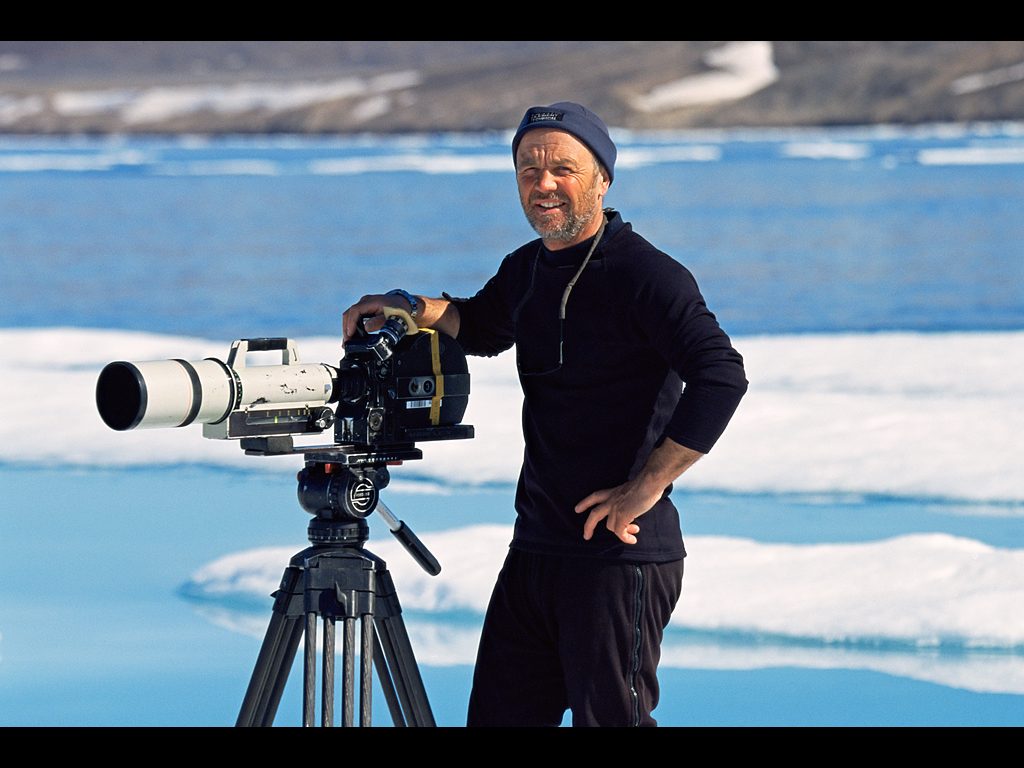
Doug Allan on location in Canadian Arctic. June 2002
Thanks to cameramen like Doug and the commissioning of wildlife documentaries such as both Blue Planets, maybe we are now starting to see a shift in global engagement with the challenges that the world faces in coming decades. I hope so. We need more Doug Allans to be out there, recording and broadcasting images of life (and death) on Earth in the twenty-first century. And to be telling their stories as engrossingly and movingly as our Doug did.
Find out more about Doug Allan by going to his website at dougallan.com.
Written by Jude Eades, Science Oxford’s Director of Communications

